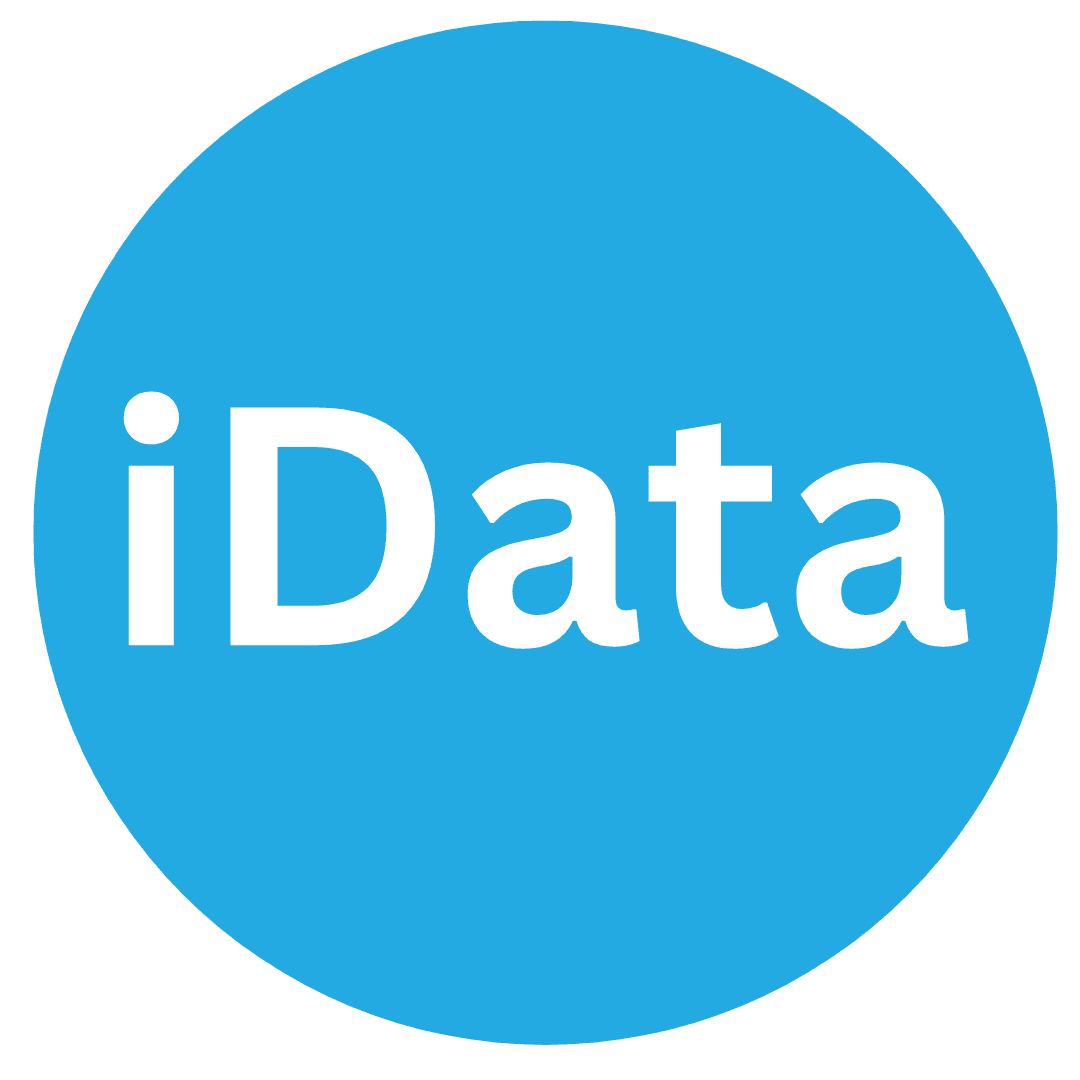你也可以成为AI提问师

你也可以成为AI提问师
- @IdataGlobal
- Don Zhang
- WWW.idataglobal.ca
- www.youtube.com/@idataglobal8

Main contents
- What is AI?
- What is AI 提问师?
- Why AI 提问师?
- How to becoming PE?
- Tips for AI 提问师
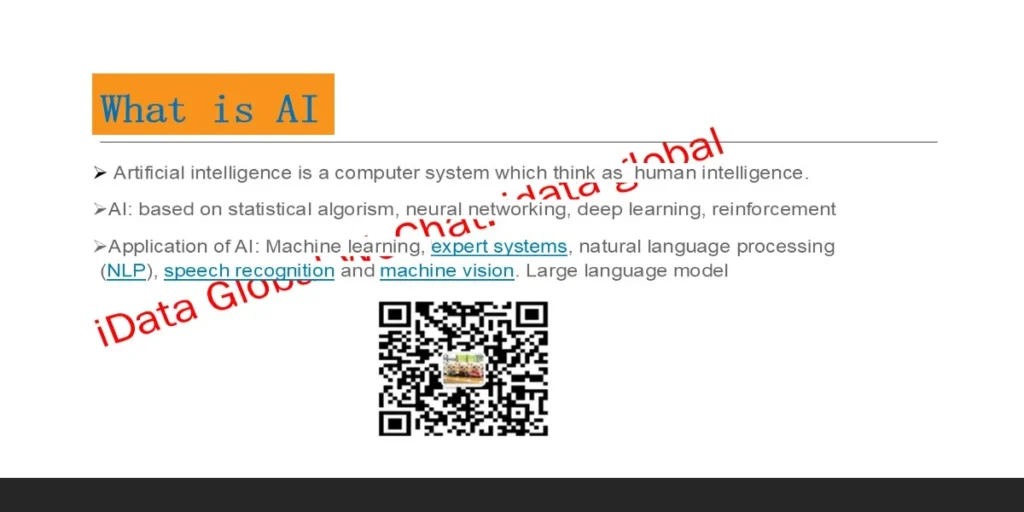
What is AI
- Artificial intelligence is a computer system which thinks as human intelligence.
- AI: based on statistical algorithms, neural networking, deep learning, reinforcement.
- Application of AI: Machine learning, expert systems, natural language processing (NLP), speech recognition, and machine vision. Large language model.
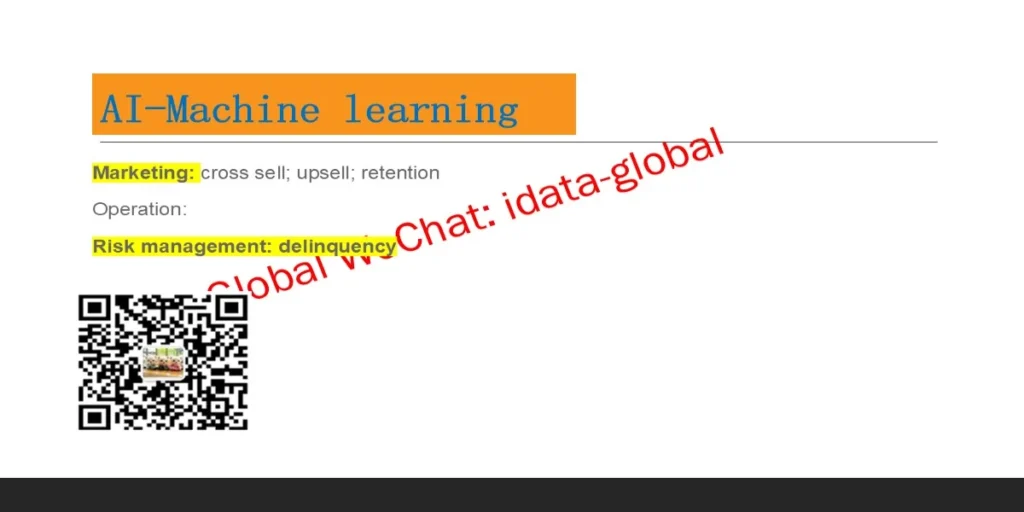
AI-Machine learning
- Marketing: cross-sell; upsell; retention.
- Operation
- Risk management: delinquency.
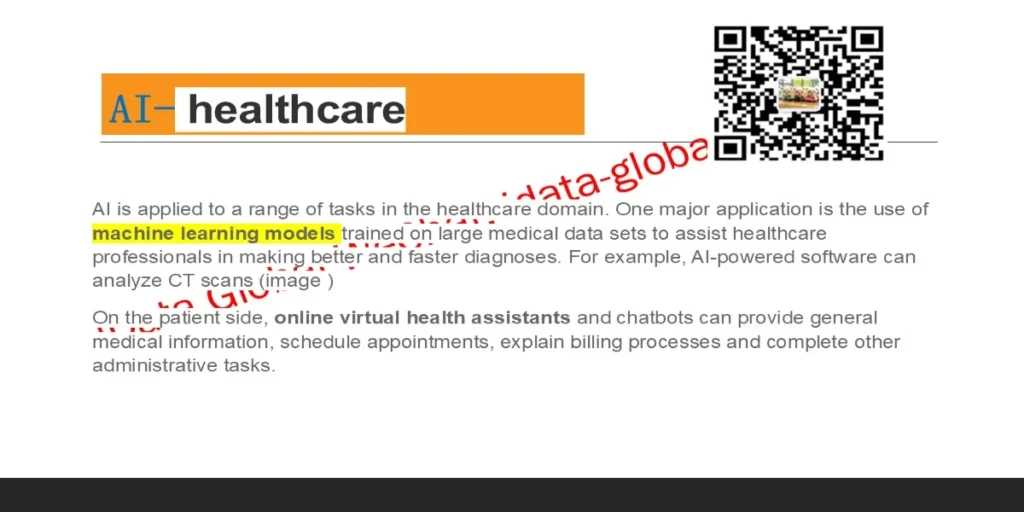
AI healthcare
AI is applied to a range of tasks in the healthcare domain. One major application is the use of machine learning models trained on large medical data sets to assist healthcare professionals in making better and faster diagnoses. For example, AI-powered software can analyze CT scans.
On the patient side, online virtual health assistants and chatbots can provide general medical information, schedule appointments, explain billing processes, and complete other administrative tasks.
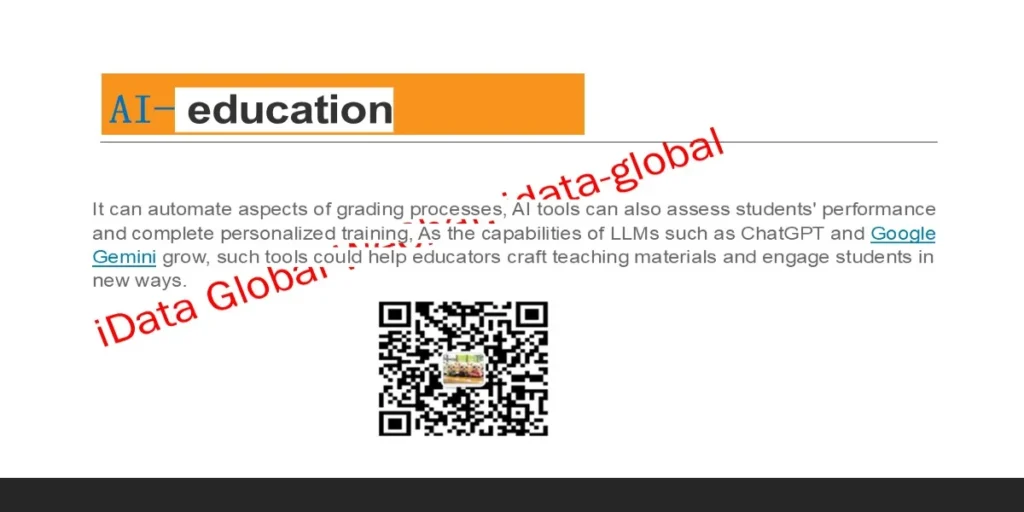
AI education
It can automate aspects of grading processes. AI tools can also assess students’ performance and complete personalized training. As the capabilities of LLMs such as ChatGPT and Google Gemini grow, such tools could help educators craft teaching materials and engage students in new ways.
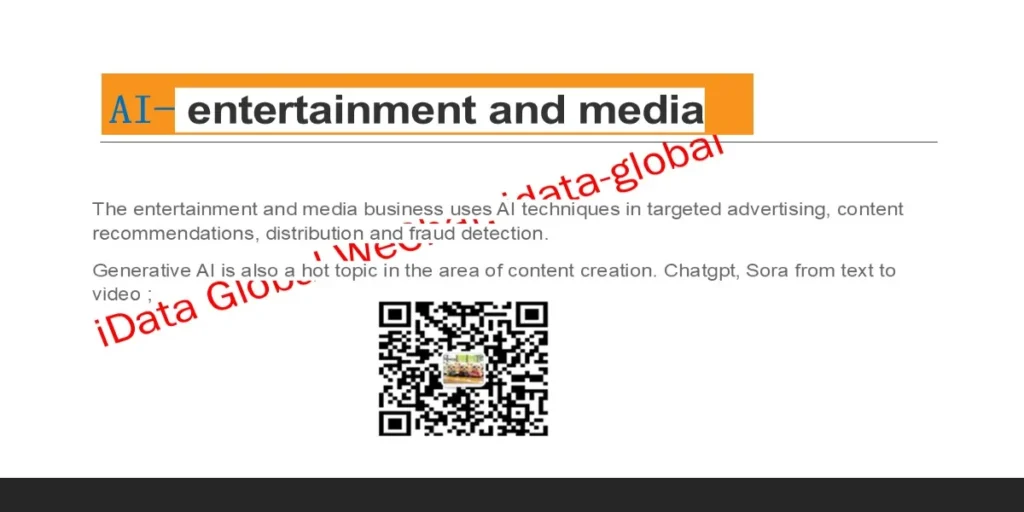
AI entertainment and media
- The entertainment and media business uses AI techniques in targeted advertising, content recommendations, distribution, and fraud detection.
- Generative AI is also a hot topic in the area of content creation. ChatGPT, Sora from text to video.
What is PE (Prompting engineering) / AI 提问师?
- Large Language Model (LLM) can accept human-machine interactive activity. We feed our questions to LLM, and the LLM model can create more accurate, consistent, and creative outputs. You can feed your questions by using text.
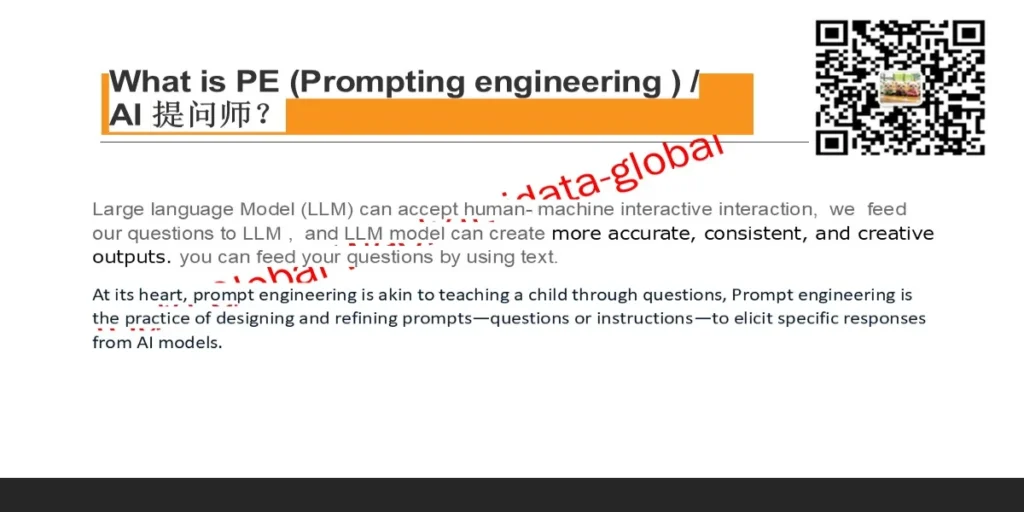
What is PE (Prompting engineering) / AI 提问师?
- Large Language Model (LLM) can accept human-machine interactive interaction. We feed our questions to LLM, and the LLM model can create more accurate, consistent, and creative outputs. You can feed your questions by using text.
- At its heart, prompt engineering is akin to teaching a child through questions. Prompt engineering is the practice of designing and refining prompts—questions or instructions—to elicit specific responses from AI models.
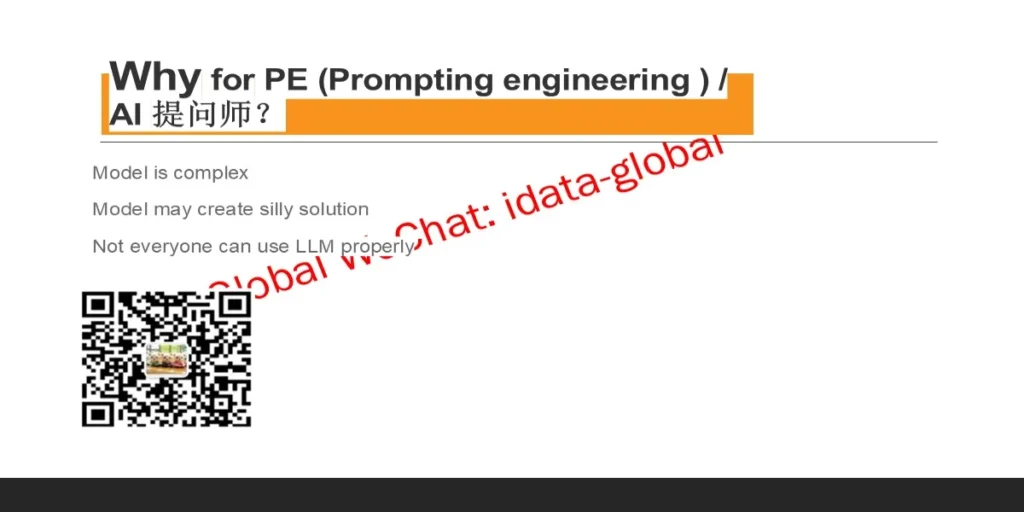
Why PE (Prompting engineering) / AI 提问师?
- Model is complex
- Model may create silly solutions
- Not everyone can use LLM properly
Slide 11
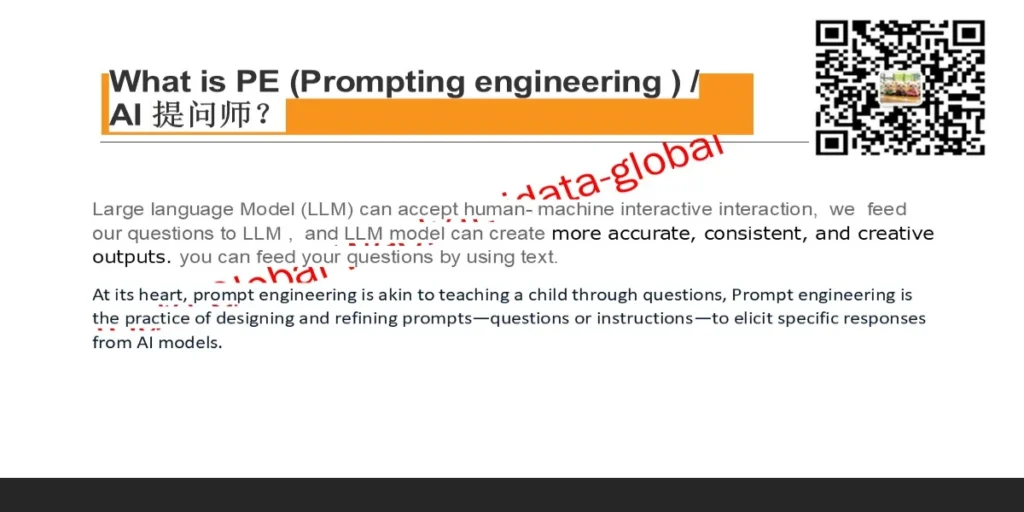
Why PE (Prompting engineering) / AI 提问师?
- PE is like QC, setting up various test scenarios, checking the output, finding the issues of models, so that developers can improve the performance of LLM.
- PE trains the model as a teacher trains a child, so it learns more knowledge and grows.
Slide 12
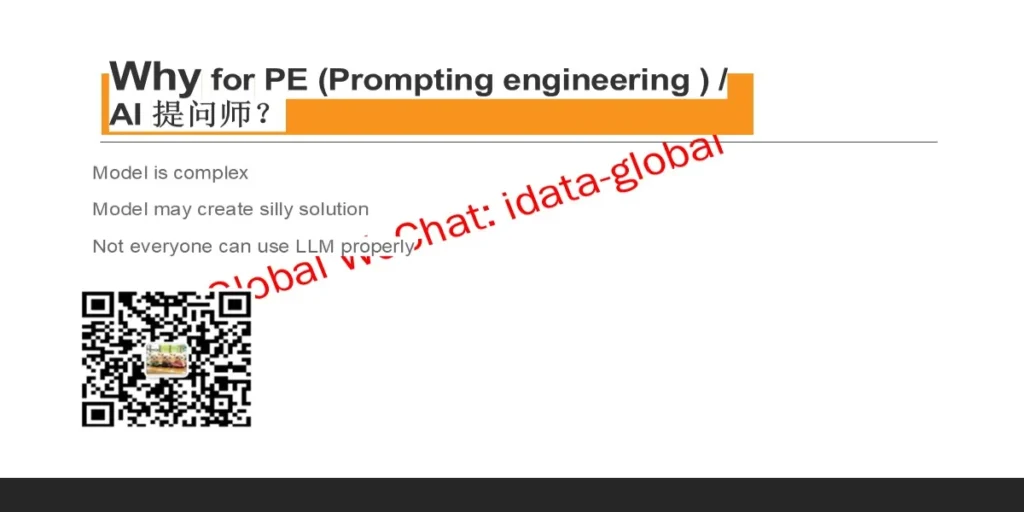
How to becoming PE
- Understanding Model architectures. Large Language Models (LLMs) like GPT (Generative Pre-trained Transformer) and Google’s PaLM (Powering Bard) are built on transformer architectures.
- Understanding Model parameters. LLMs have millions of parameters. These parameters, fine-tuned during the training process, determine how the model responds to a prompt.
- Understanding Loss functions and gradients. At a deeper level, the model’s behavior during prompt response is influenced by its loss functions and gradients.
Slide 13
Tips for PE
- Every word in a prompt matters. A slight change in phrasing can lead to dramatically different outputs from an AI model.
- Example:
- space ship: Spaceships, or spacecraft, are vehicles designed for travel or operation in outer space.
- space :: ship: Using “::” notation may emphasize or differentiate the concept of a “space ship,” leading to different interpretations in science fiction and real-world space exploration.
- Example:
Slide 14
Tips for PE
KPI: A Key Performance Indicator (KPI) is a measurable value that demonstrates how effectively an organization is achieving key business objectives. Organizations use KPIs at multiple levels to evaluate their success at reaching targets.
Slide 15
Tips for PE
- Role-playing: By making the model act as a specific role, like a historian or a scientist, for example, with variables such as age, nationality, career, and work experience.
Slide 16
Tips for PE – Iterative refinement
Start with a broad prompt and gradually refine it based on the model’s responses.
Example: Banking KPI
In the banking industry, Key Performance Indicators (KPIs) are critical for monitoring and evaluating the performance of various aspects of the business. These KPIs help banks manage their financial health, operational efficiency, customer satisfaction, and risk management. Here are some common banking KPIs:
Slide 22
Tips for PE
Example: Stress Testing Results
Stress testing is a crucial component of risk management in banking. It involves evaluating how different stress scenarios could impact the bank’s financial health. The results from stress testing help banks understand their vulnerabilities and prepare for potential adverse conditions.
What are Stress Testing Results? Stress testing results are the outcomes of simulations that assess the impact of severe, yet plausible, adverse scenarios on a bank’s capital, liquidity, and overall financial stability. These scenarios can include economic downturns, financial market disruptions, operational failures, or other extreme events.
Slide 23
Tips for PE – Avoid leading questions
Leading questions are a specific type of prompt designed to guide the respondent towards a particular type of answer. Leading questions can bias the model’s output. It’s essential to remain neutral to get an unbiased response.
Example: “Based on your experiences, how to complete stress test?”
Completing a stress test involves several steps that depend on the type of stress test being conducted. Stress tests are commonly used in different fields, such as finance, software engineering, and healthcare. Here are general steps for completing a stress test in each of these contexts:
Slide 24
Tips for PE
Example: Risk Management KPIs
Risk Management KPIs
Key Risk Management KPIs in Banking
- Non-Performing Loan (NPL) Ratio: Indicates the proportion of loans that are in default or close to being in default.
- Formula: NPL Ratio = Non-Performing Loans / Total Loans
- Significance: High NPL ratios indicate a higher level of risk in the bank’s loan portfolio and can impact profitability and capital adequacy.
- Capital Adequacy Ratio (CAR): Measures a bank’s capital in relation to its risk-weighted assets.
- Formula: CAR = (Tier 1 Capital + Tier 2 Capital) / Risk-Weighted Assets
- Significance: Ensures that the bank has enough capital to absorb potential losses and protect depositors.
- Liquidity Coverage Ratio (LCR): Ensures that a bank has enough high-quality liquid assets to meet its short-term obligations.
- Formula: LCR = High-Quality Liquid Assets / Total Net Cash Outflows Over 30 Days
- Significance: A key measure of a bank’s liquidity risk, ensuring it can withstand short-term financial stress.
- Loan Loss Provision (LLP): The amount set aside to cover potential loan losses.
- Formula: LLP = Provisions for Loan Losses / Total Loans
- Significance: Indicates the bank’s preparedness for potential loan defaults, impacting overall financial stability.
- Value at Risk (VaR): The maximum potential loss over a specific period for a given confidence interval.
- Significance: Used to assess the level of financial risk within a firm over a specific time frame.
